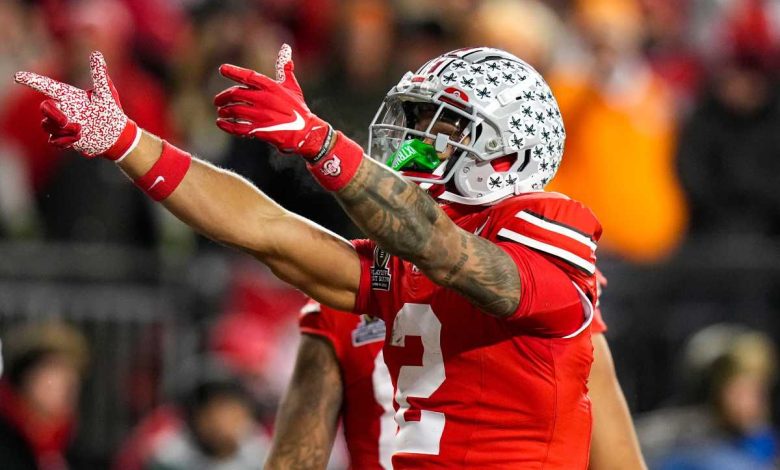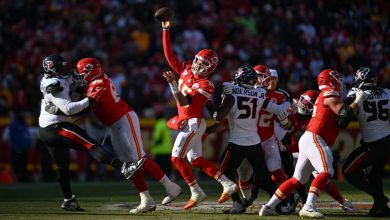Arguing in favor of selecting a running back in the first three rounds

Arguing in Favor of Selecting a Running Back in the First Three Rounds of the NFL Draft
The NFL draft is a high-stakes event, with teams across the league trying to secure future stars who can help them contend for championships. With the increasing emphasis on passing offenses and the rise of quarterback-centric teams, some might argue that selecting a running back in the early rounds of the draft is a luxury few teams can afford. The argument against selecting a running back in the first round is often built on the premise that running backs have a relatively short shelf life, are replaceable, and that teams can find production at the position later in the draft.
However, there is a compelling case for selecting a running back in the first three rounds, particularly if the right player is available. This article explores the reasons why taking a running back early in the draft remains a strategic decision for many teams. From the value of an elite playmaker to the impact on the offensive system and the team’s success, a first-round or second-round investment in a running back can provide long-term dividends.
1. The Impact of an Elite Running Back on the Offense
One of the most significant arguments in favor of drafting a running back early is the immediate and long-term impact that an elite ball carrier can have on an offense. While the NFL is increasingly pass-heavy, teams that can run the ball effectively are still able to control the pace of the game, manage the clock, and keep opposing offenses off the field. A standout running back can open up the playbook for a team, creating balance and forcing defenses to respect both the pass and the run.
When a team has a dominant running back, it creates a multifaceted offensive attack. The defense can no longer sit back and anticipate pass plays all the time, especially in situations like third-and-short or in the red zone, where running the ball becomes a more viable option. A dynamic running back can also take the pressure off a quarterback, particularly a young or inexperienced signal caller. Having a proven running back to lean on gives quarterbacks more confidence, as they know the offense isn’t entirely reliant on their arm.
Additionally, a running back with game-breaking speed and vision can force defenses to commit more resources to the run game. This opens up passing lanes, particularly on play-action passes, where the quarterback can fake the handoff and create opportunities for big plays down the field. The ability to run the ball effectively also puts less pressure on the offensive line, as defenders are less likely to pin their ears back and rush the passer if the running game is a constant threat.
2. High-Quality Running Backs Aren’t Always Available Later in the Draft
While it’s true that teams can find capable running backs in the later rounds, elite running back talent is rare and highly coveted. The first three rounds of the NFL Draft typically produce players who are expected to be instant contributors and potential stars. In many years, running back is one of the deepest positions in terms of talent, and selecting a top-tier back in the first two or three rounds can provide immediate returns for a franchise.
The value of an elite running back is undeniable when considering how they can shape an offense. A running back with both speed and agility, who is able to break tackles and turn routine plays into game-changing ones, is a rare commodity. In the first round, a team can secure a running back who may very well be the focal point of its offense, even in an era that favors passing offenses. When you’re talking about backs like Saquon Barkley, Ezekiel Elliott, or Christian McCaffrey, these players possess unique skill sets that elevate their teams.
In the second and third rounds, a team might be able to find a running back with incredible upside who could develop into an elite talent. The beauty of selecting a running back in the early rounds is that the team is investing in a proven player with high expectations, rather than rolling the dice on a late-round pick who may or may not develop into an NFL-caliber player.
Even with the growing trend of committee-based backfields, teams that have a true star running back can dominate offensively. Some of the most successful offenses in the NFL over the last decade have been led by elite running backs who are not only capable of contributing on the ground but also in the passing game. McCaffrey and Alvin Kamara are examples of running backs who are effective both as ball carriers and as weapons in the receiving game, making them multi-dimensional players and true offensive threats. These players have become so valuable that their impact on the field transcends traditional rushing statistics.
3. The Running Back’s Versatility and Dual-Role Potential
Modern NFL offenses demand versatility, and many of the best running backs in the league today are more than just rushers. They are complete players who can contribute in multiple phases of the game. This includes running the ball, catching passes out of the backfield, and blocking in pass protection.
The ability of a running back to excel in both the running and passing games increases their value, especially in a pass-heavy league. A running back who can catch passes and serve as a reliable option for the quarterback not only adds a layer of complexity to an offense but also allows the team to attack defenses in multiple ways. This versatility makes selecting a running back in the first three rounds even more appealing.
For example, a player like Derrick Henry, while primarily a traditional running back, also has the ability to catch passes out of the backfield, though his main strength lies in his downhill running style. On the other hand, players like Christian McCaffrey and Austin Ekeler are known for their exceptional hands and ability to line up as wide receivers. These backs have become more important than ever because they provide both a reliable ground attack and a significant threat in the passing game, making them indispensable assets for their teams.
In addition, running backs who excel in pass protection can help stabilize the offense in high-pressure situations. Many young quarterbacks, particularly rookies or those under heavy scrutiny, rely heavily on running backs to help protect them from blitzes. A reliable pass protector in the backfield allows the quarterback to stay calm in the pocket, secure in the knowledge that they have an extra blocker to pick up any rushing defenders.
4. The Evolution of Running Back Usage in the NFL
Gone are the days when teams relied solely on one primary running back for all three downs. Today’s NFL offenses tend to use running back by committee (RBBC), but the presence of a top-tier, every-down back is still incredibly valuable. While many teams utilize a variety of running backs, the workhorse running back who can carry the ball 20-25 times a game, while also contributing as a receiver, is still a highly sought-after player.
The usage of running backs in the passing game, including screens, wheel routes, and even lining up in the slot, has been increasingly common in modern offenses. A running back who can perform these tasks can make a huge difference in a team’s overall offensive strategy. With the increasing importance of matchups and creating mismatches on the field, a running back who can make plays in space is a weapon that can keep opposing defenses on their heels.
Moreover, with the increased focus on tempo offenses and spread concepts, having a running back who can hit the ground running (literally) and generate positive yardage on the first few downs can be a huge advantage. Teams are more willing than ever to select running backs in the first few rounds if they see them as contributors not just in short-yardage situations but as true playmakers capable of moving the ball in a variety of ways.
5. Protecting the Quarterback and Limiting Offensive Pressure
One of the key aspects of building a successful offense is protecting the quarterback. While much of the attention around protecting the quarterback is focused on the offensive line, the running back plays a crucial role in keeping defensive pressure at bay. A dynamic, physical running back can help the offense by allowing the team to maintain a balanced attack. This balance keeps defenses guessing and ensures that the quarterback is not constantly under siege by opposing defenses.
For example, a team with an elite running back can force a defense to be more aggressive against the run, which can ultimately open up passing lanes for the quarterback. Conversely, when a team has a weak running game, opposing defenses can focus more on rushing the passer and covering receivers, which puts more pressure on the quarterback and often leads to inefficient offensive play.
An exceptional running back who can move the chains and gain yards on early downs also provides the quarterback with easier situations. For example, second-and-6 is a much easier situation for a quarterback than second-and-10, and an elite running back is capable of creating those manageable downs.









